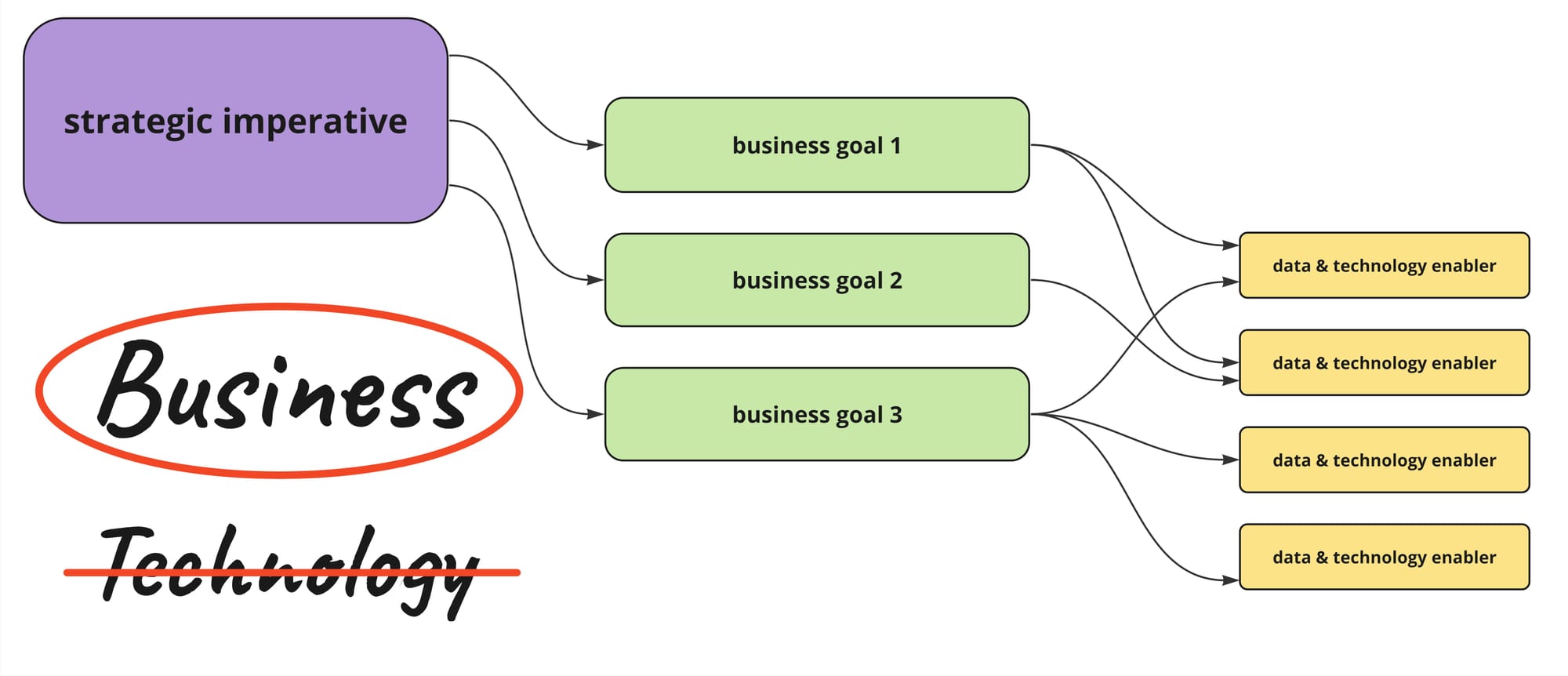Data strategy: how to get started

An effective data strategy starts with the business and its key drivers. These drivers should be translated into overarching goals (strategic imperatives), which can then be broken down into actionable steps (business objectives). Only after these steps have been identified should the decision be made on how technology and data can support each of the identified business objectives.
The process of working from the strategic imperatives down to data and technology solutions requires close collaboration of leaders from various departments. It is their responsibility to enable an execution on data strategy and seeing it through to fruition within their respective areas of the organization.
Getting strategic
A successful data strategy starts with the business, its drivers, long-term vision and goals. Here are some examples:

From strategy to business objectives
Next, the long-term strategic imperatives need to be broken down into tactics—the specific steps you plan to take—your business goals. Let's examine how this could look for the three examples mentioned earlier. In the examples below I have intentionally avoided SMART principles to keep the material more readable.

Leveraging data and technology to achieve business objectives
It is a common mistake for a company to jump into implementing data and technology solutions without proper prior planning. This often leads to teams spending months on “brilliant” initiatives like building a data lake or real-time dashboards, which completely neglect the actual needs of the business departments. Meanwhile, simpler solutions that could resolve issues within days or weeks, leading to clear business wins, are neglected.
To get it right from the start, consider data and technology solutions only after breaking down your strategic imperatives into specific business goals. Only now should you think if and how a technology solution can help you achieve those goals. Let’s take a look into the above-mentioned retail industry example:

Summary
Implementing an effective data strategy starts by aligning with the overarching strategic imperatives and business goals of the organisation. It's critical to first understand the high-level objectives that drive the company's direction, as communicated by leadership. Once those strategic imperatives are identified, the next step is breaking them down into specific, measurable business objectives that can realistically be achieved. These tangible business objectives then form the foundation for determining what data and technology solutions are required to support and enable accomplishing those goals.
It is very important that this full hierarchy—from strategic imperatives down to enabling data/tech solutions—is transparently communicated across the organisation. This allows employees and departments to connect their day-to-day work back to the bigger picture strategic vision. By grounding a data strategy in the context of broader business objectives emanating from core strategic drivers, organisations can ensure their data and technology investments are purposefully aligned to key priorities. And openly sharing this top-down mapping builds critical organisational understanding and buy-in.
